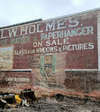- Thread starter
- #51
Adagio for Strings, Op. 11 · Samuel Barber · New York Philharmonic Orchestra · conductor: Leonard Bernstein.
Follow along with the video below to see how to install our site as a web app on your home screen.
Note: This feature may not be available in some browsers.
 SPORT NAME Notice logo
SPORT NAME Notice logoJoin the Sweet FA and sign up for State Of Origin! Rivalry, Banter and New Friends made along the way in Bigfooty’s own AFL-Style simulated game. Everyone Welcome! -- Sweet Football Association - Since 2001 AD
 Soccer Notice Image
Soccer Notice ImageEUFA EURO 2024 - Group Stage ⚽ EPL 24/25 starts Aug 17 ⚽ Champs League 24 - Quals

French connections again ……...
The Reels:
Nina:
Bowie:
View attachment 2027699
Fassbinder:
To finish here …….
Abigail:
I liked when Mick Harvey tackled Gainsbourg
Yep,Bonnie and Clyde for the winBetter than Abigail you reckon ?


